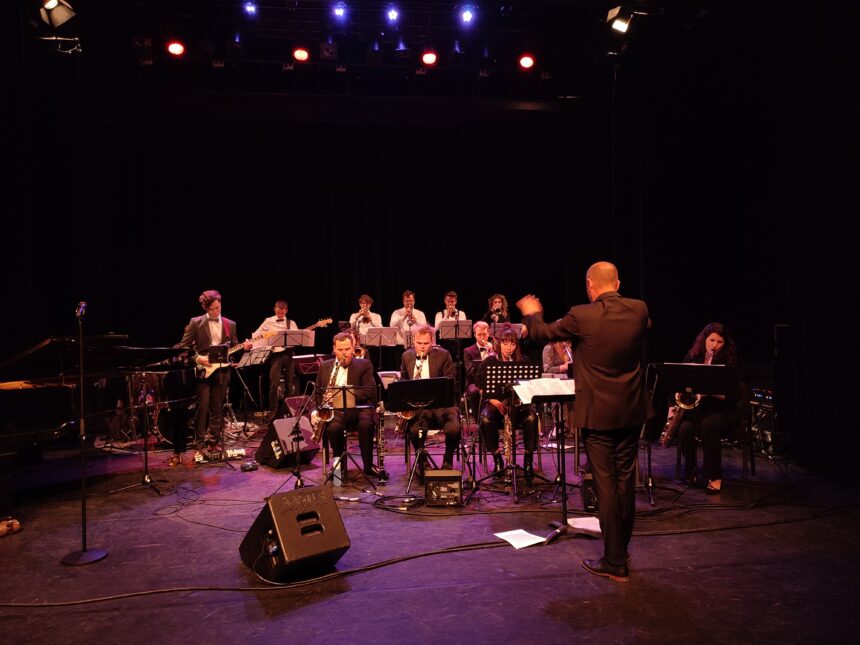On March 26th, CREA hosted Classic Meets Jazz, a concert by the Amsterdam Student Big Band (ASBB). What makes a classic a classic? What makes music classical? When did jazz unmeet classical music? And most importantly, who decided what is considered a classic? These are not just questions that have shaped history, but rather, sentences lurking in the silence of music culture. In the case of a jazz big band, rarely there is space for silence. However, the silence in Classic meets Jazz was the lack of representation of the very unrooted roots of this genre: the convergence of plenty of different cultures with the desire to speak up against racial discrimination.
From its very beginning, jazz music was born out of the plurality of cultures in New Orleans: from Black African descendants to Creole educated in the European fashion, to the rhizomatic Caribbean. It became the translation of the minorities, their souls and ignored voices. The use of ‘classic’ – meaning both classical music and the concept of a ‘classic’ in an apparent fusion – in the title Classic Meets Jazz is problematic. Not only has jazz always been influenced by classical music, brought up by the Europeans to the United States and kept as part of their culture by the Creole, but it has, for some time now, produced its very own classics – better known as standards – that have shaped the history of this genre. Is there a way for a ‘classic’, or for classical music, not to be related to jazz, when precisely the first time they met was when jazz was born? If so, the problem lies with the representation of this genre, and how it is represented is precisely what has been taught to us: a reminiscent memory of those still believing in the problematic distinction between high culture and mass culture. Jazz has been depicted as both: firstly as part of a ‘low culture’, and nowadays, ‘high culture’.
By now, we should all be aware of the fact that we live in an era of globalisation. In this setting, it is of great importance to understand how things started in order not to substitute their emancipatory origins for a desire to simply enjoy it. Jazz is rooted in people’s suffering, therefore, it is irremediably linked to politics and plurality. Not only does it demand compromise with understanding its origins consciously, but also an amount of respect rarely found in the bloody history of European colonialism. How is this reflected in a big band of Amsterdam, one of the most diverse cities in Europe, home to at least 180 nationalities? In the case of Classic Meets Jazz, it was not. The responsibility of our Western privileged positions demands us to understand that we need to reinforce diversity and its representation within institutions, in this case, CREA and the ASBB. Apart from the cited example from one Spanish musician playing, the multiplicity of jazz roots was not met in the hall. Not through the musicians, nor with the setlist, apart from an arrangement by Duke Ellington (a composer rarely missed in a big band’s repertoire). They could have integrated music by Charles Mingus or Wynton Marsalis, people closely related to the politics of jazz. Either the lack of representation is intrinsically related to its bureaucracy, or it goes without notice. Ultimately, both have the same effect: we still have a lot of work to do in order to do justice to jazz and those behind its political side.
The reason why jazz resonates so deeply in our souls is because of its plurality. Jazz music rejects to be from one place or another; from one time or this time. And it needs to be kept that way. The genre demands politics and plurality: it demands politics of representation. This does not mean that it is only a political tool, but rather something that can be used in plenty of ways as long as its different uses are in balance with one another. Therefore, being aware of its historicity and doing it justice is crucial. As part of such a prestigious cultural centre, CREA, linked to the UvA, the ABSS should promote plurality, through its setlist and musicians, but also with the image it gives to us and the way in which it is promoted. Let us not forget that the notion of a classic still has deeply segregated connotations and that, unfortunately, we still have a long way to go till we finally are able to say that we live in a society based on equality.

